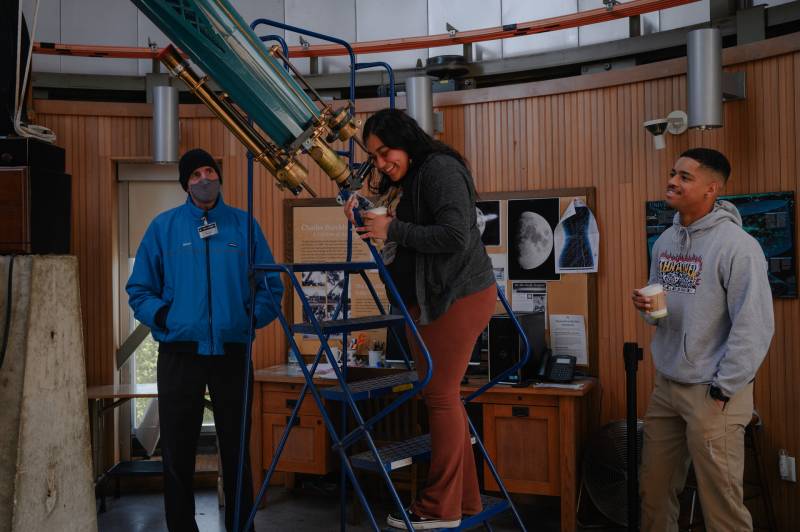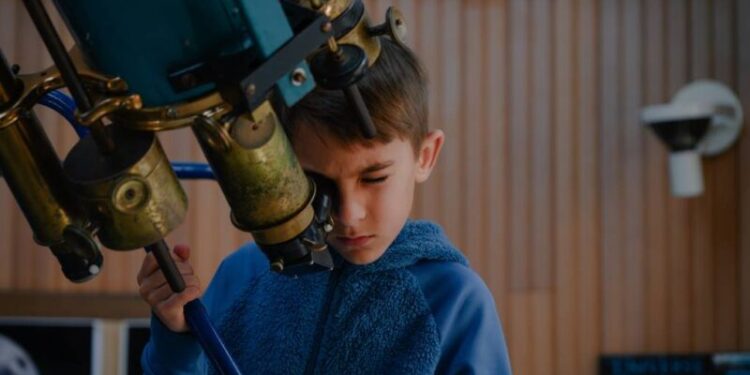Where to find dark skies
The general advice for success in stargazing is to find a dark spot, away from city lights. Once you’ve found it, give your eyes a chance to get adapted, and then look all over the sky.
Places like Henry W. Coe State Park in the South Bay, Skyline Boulevard in Oakland and Mount Diablo in the East Bay, Mount Tamalpais and Point Reyes in Marin County, and Bodega Bay in Sonoma County in the North Bay have especially dark skies and optimal conditions for stargazing. On the peninsula, Pescadero and the Santa Cruz Mountains are good spots.
If you’re willing to drive a bit further, you can head out of the Bay Area to places like Pinnacles National Park, Death Valley, Yosemite or other national parks that usually have less light pollution. Or, refer to a dark sky map to find out where you’ll have the best view.
You can join a free telescope viewing at Chabot Space and Science Center in Oakland. On the peninsula, there’s the Foothill College Observatory in Los Altos Hills, and in the North Bay you can go to the Robert Ferguson Observatory in Sonoma County, which regularly has telescope viewings available to the public.
 Kayleen Mojica, 21, laughs as she peers at Venus through the 8-inch Alvan Clark Refractor telescope at Chabot Space and Science Center in Oakland on Feb. 17, 2023. (Kori Suzuki/KQED)
Kayleen Mojica, 21, laughs as she peers at Venus through the 8-inch Alvan Clark Refractor telescope at Chabot Space and Science Center in Oakland on Feb. 17, 2023. (Kori Suzuki/KQED)
Or you could join an astronomy club, like the San Francisco Amateur Astronomers.
“There are actually hundreds of clubs of astronomy enthusiasts around the country. And in the Bay Area, we have a very rich collection of astronomy clubs,” said Fraknoi.
You can find other fellow astronomy enthusiasts on NASA’s Night Sky Network, many of whom host star parties and astronomy events, including camping trips.
Tips for taking photos of stars and meteor showers
Shreenivasan Manievannan, a professional photographer and Bay Area resident, has been an advocate at the International Dark-Sky Association since 2014. He’s involved with public outreach activities that promote the protection of our dark skies. This includes sharing his love of astrophotography through photos and time-lapse videos of the amazing views of our cosmos and organizing workshops about the importance of our dark skies at public libraries.
For those interested in taking photos of the night sky, Manievannan says you should first understand which camera suits your need and what you are trying to capture. If you’re planning on shooting high-quality images and are ready to make the investment, Manievannan’s advice is to first look for a basic SLR or mirrorless camera with a good wide-angle lens, a camera that can take long exposure shots, like 15 to 30 seconds long.
If you’re not ready to make an investment but still want to take some good night shots, he says most camera phones these days can take decent photos of the night sky, and are equipped with night mode functions.
The second important tip, he says: Make sure you have a camera mount or a tripod. The mounts will help capture those really long exposures, something that can’t be done reliably by just holding it with your hands. Read a detailed guide for astrophotography for beginners from space.com.




















